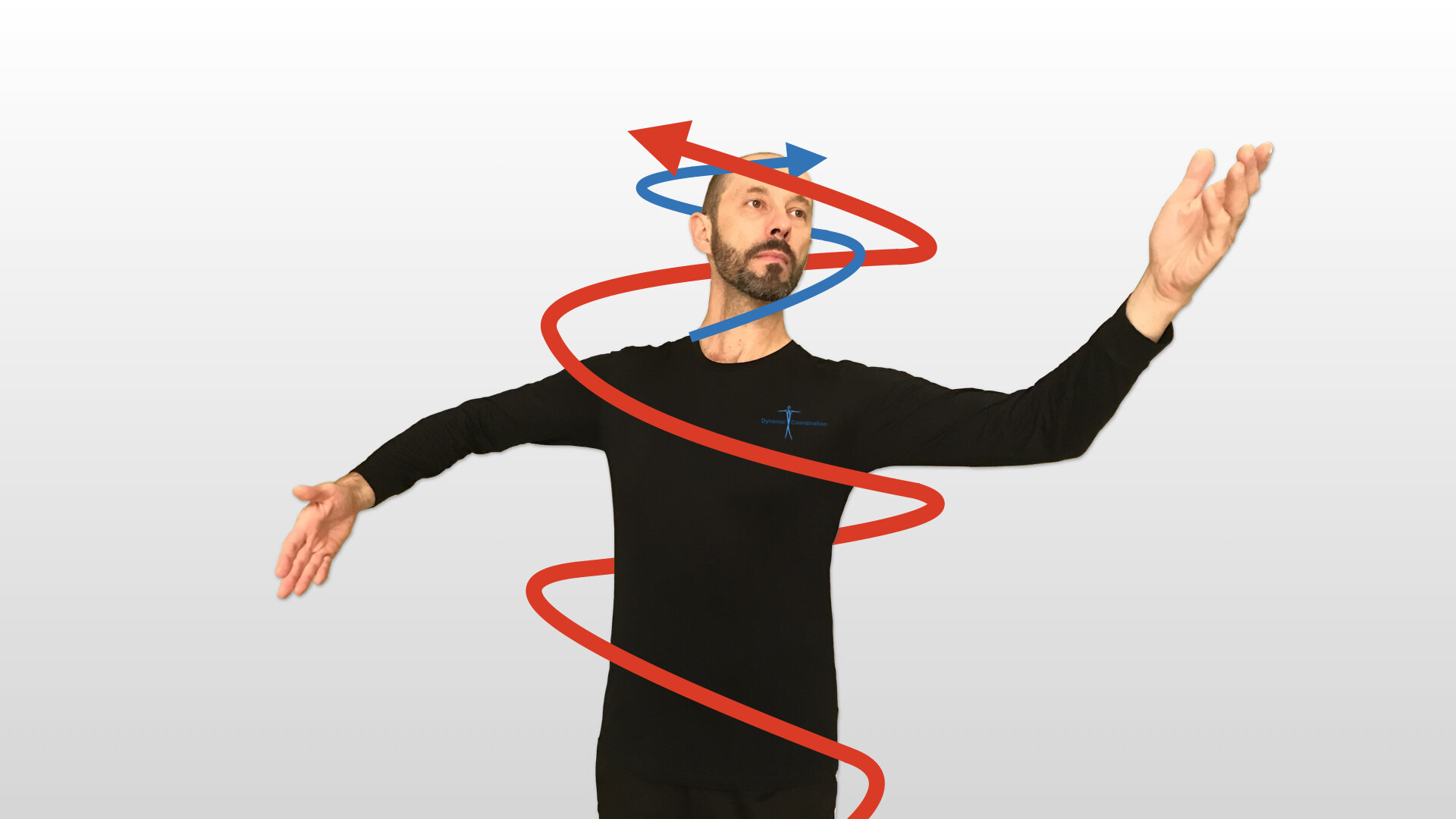Spirals: What Ballroom Dancing is Built On
In the article Primary and Secondary Curves: the Secret to Power, Fluidity, and Control, I introduced the concept of primary and secondary curves. Now, we will explore how these curves interweave to create spirals. Understanding and using this mechanism gives dancers a sense of flow, continuity of movement, lift, support, and natural connection of body parts into one coordinated whole.
Raymond Dart, a late Australian anthropologist, said that flexion and extension are the only movements that any muscle can perform. Thus, rotation is the resultant interaction between them. According to Dart’s model, our musculature forms two spiraling sheets, diagonally wrapping around the torso, from the rim of the pelvis on either side, to the mastoid process behind the ear, also on either side. This is called the double spiral arrangement.
When performing a spiral from fetal curve, we can clearly see how two diagonal lines (from left shoulder to right hip, and from right shoulder to left hip) appear of different lengths. The longer line represents primary curve (flexion), and the shorter one, secondary curve (extension). The crossing of the curves creates a spiral. Notice how the movement, which initiated from the eyes and head, travels through the torso, and affects the hips as a result.
Primary and secondary curves when looking up from fetal.
Spiraling is at the core of basic ballroom technique. The idea of Contrary Body Movement (CBM) is basically a spiral. Every turn in ballroom technique is initiated by CBM, or spiral. We will demonstrate this idea by showing parallels between Dart roll on the floor and Double Reverse Spin.
Notice the sequencing of the spiral in Dart roll, beginning with the eyes, continuing with the head, then upper torso, middle and lower back, pelvis, and finally the legs. Now, notice in Double Reverse Spin, in the follower in particular, how the head leads the movement and body follows, echoing the sequence seen in Dart roll. Leader’s spiral has a different point of initiation, but once in motion, you can clearly see the spiraling path of the movement.
Next time, we will explore the function of opposing spirals.
NOTE: If you are interested in learning more about spirals and their applications in other dance forms, I highly recommend the book “Dance and the Alexander Technique. Exploring the Missing Link” by Rebecca Nettl-Fiol and Luc Vanier (University of Illinois Press, Urbana, Chicago, Springfield, 2011).








